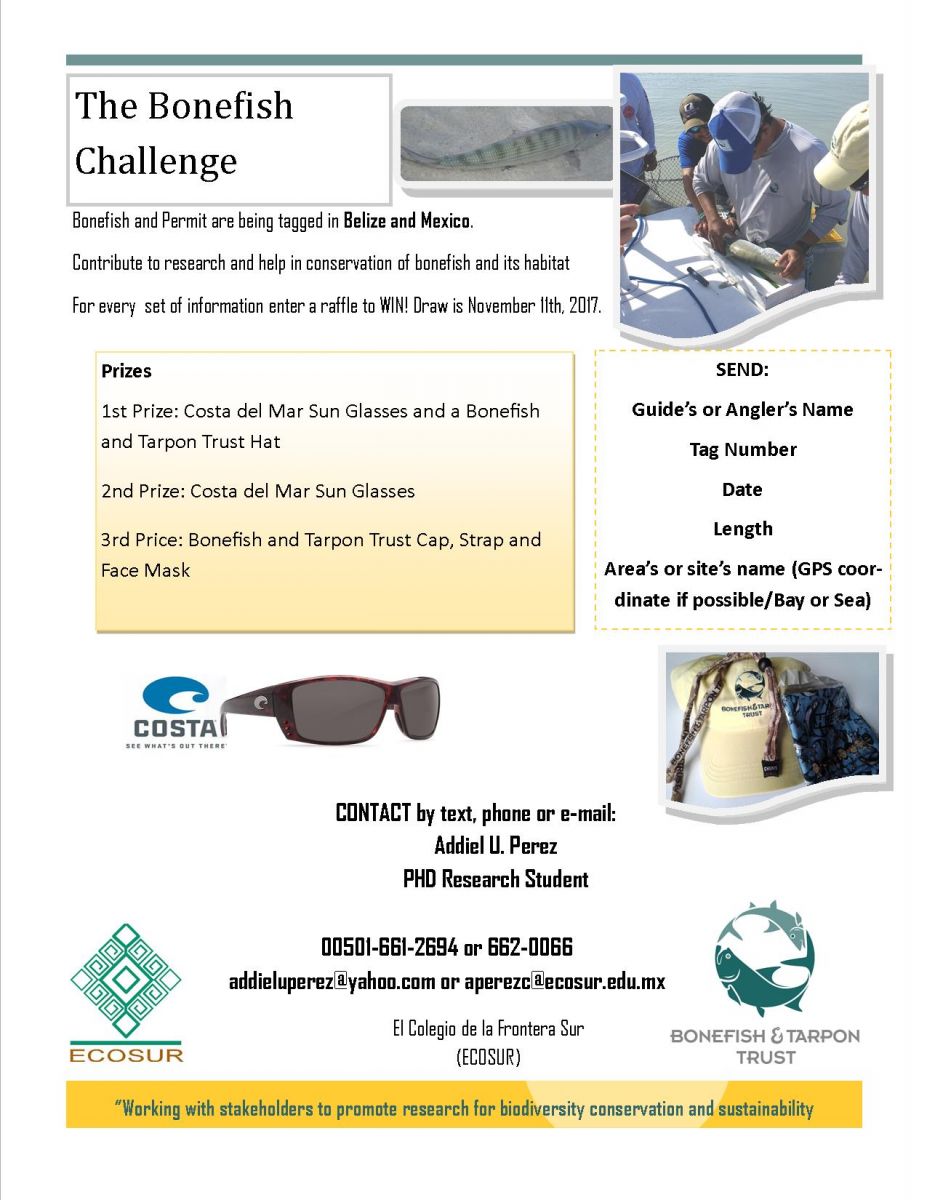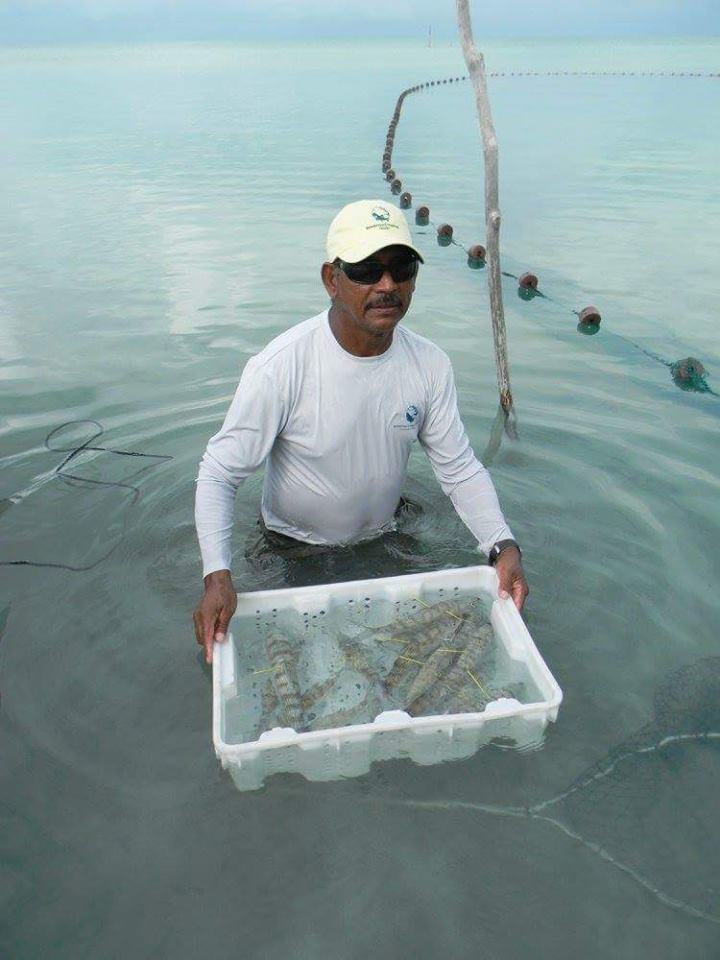Tracking Bonefish in Mexico and Belize: Two Countries with a Shared Fishery
Anyone who has fished the flats of the Yucatan Peninsula knows about the expansiveness of the flats habitats. Sand flats, seagrass beds, mangrove-lined shorelines, mangrove lagoons, and tidal creeks fit together like pieces of a jigsaw puzzle in a broad habitat mosaic. To the guides and anglers who know the region well, each piece of the puzzle contains its own secrets in the ways of fish: tarpon meander from a tidal creek to a sand flat; bonefish ride the tide onto and off of flats in small troughs that are barely discernable.
But few, if any, know how the many pieces of the jigsaw puzzle are connected. Do fish reside in one piece of the puzzle, or do they move among the pieces? If they move, how far, and do they return to a home area? More importantly from a conservation perspective – to what extent are the flats fisheries of Belize and Mexico shared, and what conservation measures are necessary to ensure this valuable fishery is sustainable?
Belizean Addiel Perez, who is working on his Ph.D. at El Colegio de la Frontera Sur (ECOSUR) in Chetumal, Mexico, is working to answer these important questions.
Addiel is working with fishing guides, fishing lodges, commercial fishermen and others to use tag-recapture to better understand the movements of bonefish in this region. So far, Addiel has tagged more than 6,000 bonefish and more than 70 permit from Caye Caulker, Belize, to Xcalak, Mexico. Addiel is also closing in on a likely pre-spawning site that might be shared by bonefish from Belize and Mexico.
Although Addiel and his collaborators have recaptured nearly 80 bonefish during their tagging expeditions over the past 4 months, he needs your help – please report the recapture of any tagged bonefish. This is what to do if you catch a tagged bonefish:
- Record the tag number. Write down the tag number, or take a photo of the tag with your camera or phone – make sure the tag number is legible in the photo before releasing the fish.
- Record the date and location. Be as specific as you can on the location. No worries – the information is not shared.
- Measure the length of the fish from the tip of the nose to the fork in the tail.
- Report the recapture. On each tag is contact information for reporting the recapture – you can call a local phone number that is listed on the tag, or report it on the BTT web site: https://www.bonefishtarpontrust.org/report-tagging-data
And if you report a recapture you might win a great prize!
Addiel will present an update on his project at the BTT Symposium in November.





